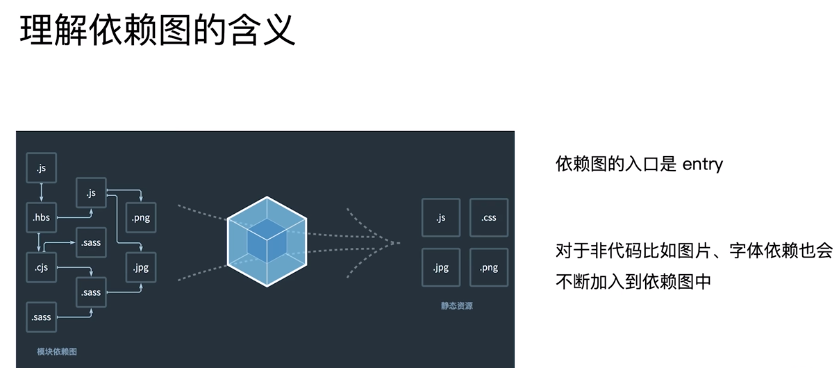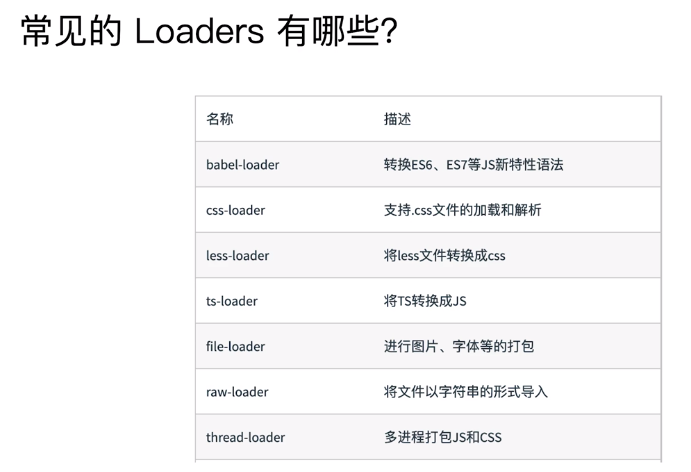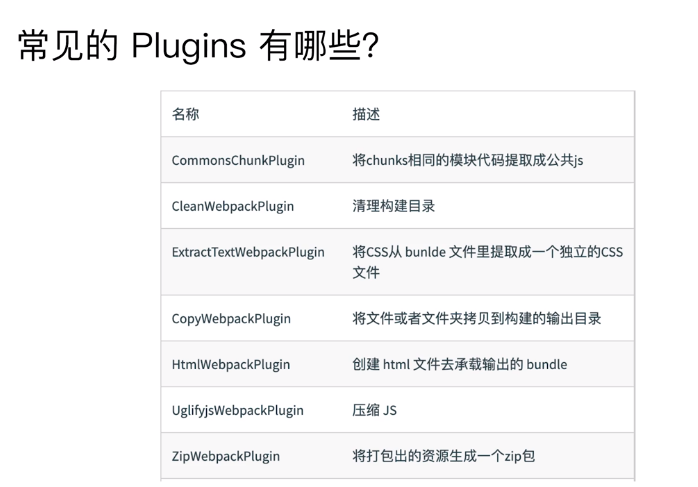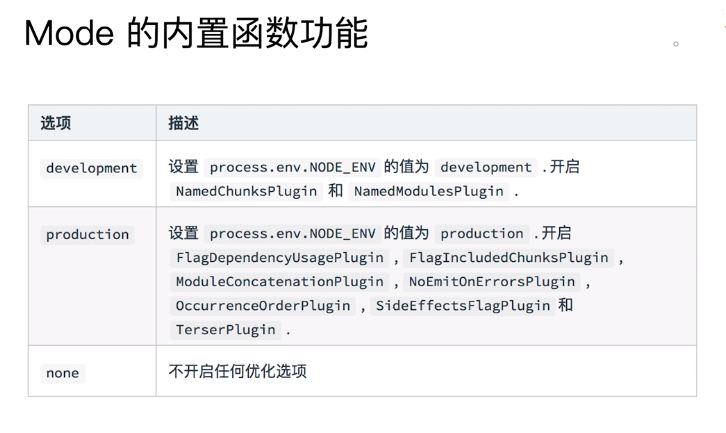🌙 Webpack学习笔记之核心概念
🌙 1.Entry
Entry用来指定webpack的打包入口。

🌙 1.1 entry单入口
单入口:
entry是一个字符串module.exports = { entry: './path/to/my/entry/file.js' }1
2
3
🌙 1.2 entry多入口
多入口:
entry是一个对象:module.exports = { entry: { app: './src/app.js', admin: './scr/admin/app.js', } }1
2
3
4
5
6
🌙 2. Output
output来告诉webpack如何将编译后的文件输出到磁盘
🌙 2.1 output单入口
module.exports = {
entry: './path/to/my/entry/file.js',
output: {
filename: 'bundle.js',
path: path.join(__dirname, 'dist')
}
}
1
2
3
4
5
6
7
2
3
4
5
6
7
🌙 2.1 output多入口
output并没有专门的多入口配置,它是通过占位符确保文件名称的唯一性来实现多入口的。
module.exports = {
entry: {
index: './src/index.js',
login: './src/login.js'
},
output: {
filename: '[name].js', // 占位符 [name]
path: path.join(__dirname, 'dist')
}
}
1
2
3
4
5
6
7
8
9
10
2
3
4
5
6
7
8
9
10
🌙 3. Loaders
webpack开箱即用只支持JS和JSON两种文件类型,通过Loaders区支持其他文件类型并且把它们转化为有效的模块,并且乐意添加到依赖图中。
Loaders本身是一个函数,接受源文件作为参数,返回转换后的结果。

🌙 3.1 Loaders的用法
通过rules中的test指定正则匹配规则(匹配文件名),use指定对应的loader来解析:
const path = require('path');
module.exports = {
output: {
filename: 'bundle.js'
},
module: {
rules: [
{test:/\.txt/, use: 'raw-loader'}
]
}
}
1
2
3
4
5
6
7
8
9
10
11
12
2
3
4
5
6
7
8
9
10
11
12
🌙 4.Plugins
plugins即插件,用于bundle文件的优化,资源管理和环境变量的注入,它作用于整个构建过程。

🌙 4.1 Plugins的用法
将plugin放在plugins数组中:
const path = require('path');
module.exports = {
output: {
filename: 'bundle.js'
},
plugins: [
new HtmlWebpackPlugin({template: './src/index.html'})
]
}
1
2
3
4
5
6
7
8
9
10
2
3
4
5
6
7
8
9
10
🌙 5. Mode
mode用来指定当前的构建环境:production、development或none。
设置mode可以使用webpack内置的函数,默认值为production(生产环境)。
